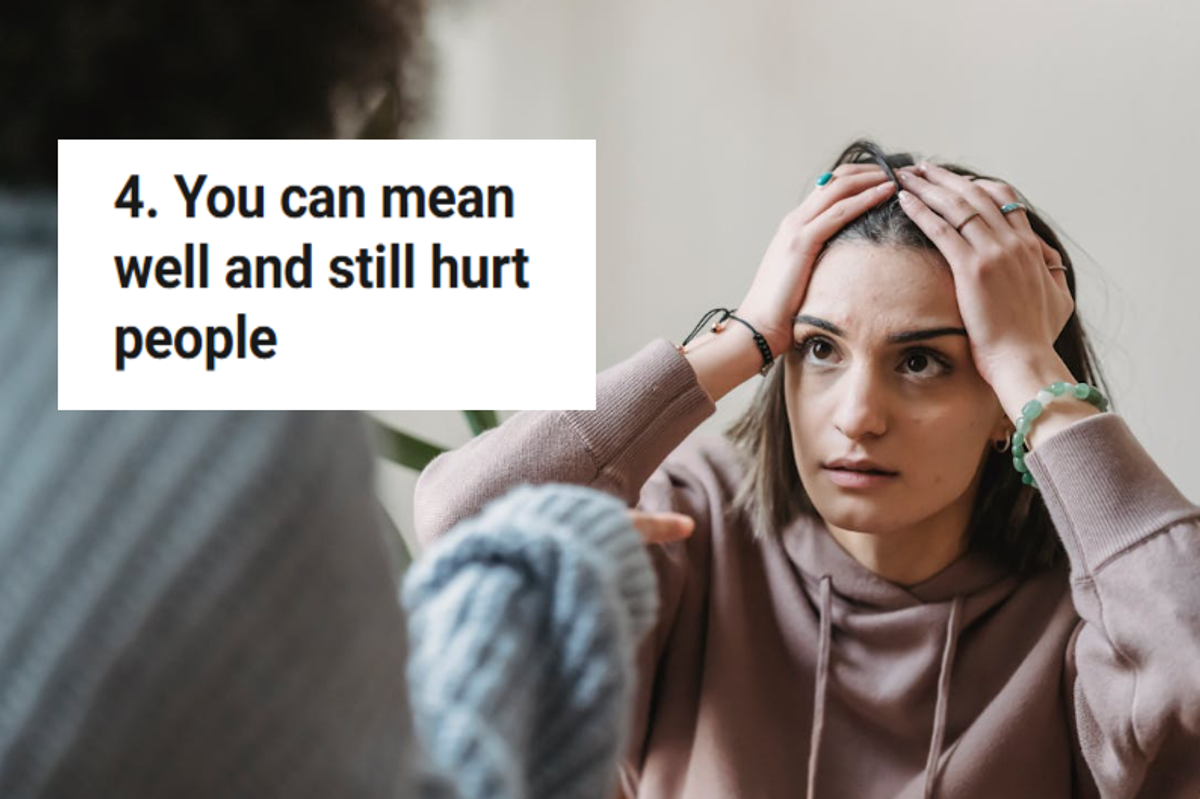When it comes to discussing pelvic health with your daughter, the sooner the better.
Don't wait till puberty.
For young girls and teenagers, talking about periods, sex, and pelvic health can be ... awkward.
Unfortunately, as a society, we seem to ignore the pelvic region until puberty. According to Missy Lavender, founder of To Know Is to Know — a nonprofit that will educate girls and their grownups about all things pelvic — and author of the book "Below Your Belt," it's a scary trend.
"From a pretty young age, we were completely ignorant and passive-aggressive about our pelvises," Lavender says. "We kind of shove them aside to that icky place we only look at once a month."
But halting conversation about the pelvic region — the area of the body that houses reproductive organs and essential digestive organs — can cause serious health problems for young girls.
Our hush-hush culture around female pelvic health has created generations of girls and women with chronic pelvic disorders.
All images via iStock.
According to a number of studies, around one-third of U.S. women have a pelvic floor disorder, and research from Lavender's foundation shows that at a young age, many girls are already symptomatic with preventable issues that can follow them into adulthood if not addressed.
The lack of knowledge also leaves women ill-prepared for common life events related to the pelvis, such as the start of menstruation, sexual activity and sexually transmitted infections, pregnancy, and childbirth, according to a study published in the Journal of Pediatric and Adolescent Gynecology.
To prevent these problems, Dr. Deepa Camenga, assistant professor and pediatrician at the Yale School of Medicine, says we need to talk openly about the pelvic region with our daughters at an early age.
"When we drop our kids off for camp, we remind them of healthy habits like 'Be sure to put on sunscreen before and after the pool' and 'Wash your hands,' but we rarely remind our kids to go to the bathroom," Camenga says. "Holding it" for too long, she says, may increase the chance of developing pelvic muscle disorders, incontinence/bladder leaking, and urinary tract infections in the future.
This advice might sound silly or obvious to an adult ear, but the truth is pelvic and toilet health is learned.
It's up to parents and educators to teach girls what's going on with their bodies. It's a matter of their health.
Here are a few do's and don'ts on talking pelvic health with your daughter:
- Do your homework. Some of us adults don't have the full story on our pelvises either. Consult with your child's pediatrician for helpful reminders and tips. There are resources (including "Below Your Belt") available to help address the whole picture of what's going on "down there."
- Do engage early and take advantage of youthful curiosity. The earlier you can begin the conversation, the less likely the topic will already be stigmatized for your child. Any time they hint at a question about their pelvic region, engage. Smaller questions are sometimes the gateway to larger issues. Camenga says if your child is younger, feed into their curiosity about toilet behavior. "They'll be asking all sorts of questions about their bodies, so when questions come up about down there, address it head-on."
- Do make the conversation natural and easy. If you show it's not weird for you (even if it is), it'll help them relax and speak freely on the topic. "Answering questions in a matter-of-fact way helps de-stigmatize the conversation as well," Carmenga says. "When your kids perceive it as part of the everyday conversation and not as special and secretive, they're more likely to be open."
- Don't frame it as "The Talk." Pelvic health isn't focused on the birds and the bees. Camenga says treating this as "The Talk" can create a feeling that pelvic health should be secretive and only discussed in certain environments.
- Do include pelvic health in your list of healthy reminders. Things like wiping front to back, not "holding it," and reminders that using the bathroom is a healthy act can go a long way.
- Do connect in ways that make sense to them. There are plenty of apps, games, and books available to engage kids in different ways. Lavender has raised funds to create an app called Below Your Belt to accompany her book.
- Do keep in mind that health education classes don't cover everything. Many health classes don't even begin until pubescent ages for most students, so the importance of regular bathroom use and encouraging discussion when something — good or bad — is happening below the belt aren't being reinforced in the classroom. Studies have confirmed that "while school-based health education has been found to be effective in increasing knowledge of sexual function and behaviors, current efforts lack a comprehensive approach to understanding the pelvic area of the female body and the interrelatedness of the organs and muscle functions."
Even if it feels awkward, an open dialogue with your daughter about her pelvis is essential to her health.
Teaching good habits and building a foundation of openness at a young age will help your daughter stay healthy and keep lines of communication open through the thorniness of puberty.
So talk it out. It could make for more happy, healthy young women in the world.



 Meatloaf was a staple dinner.
Meatloaf was a staple dinner. Spaghetti is still a classic.
Spaghetti is still a classic. Why were pork chops so popular?
Why were pork chops so popular?
 An upset woman sits in her car.via
An upset woman sits in her car.via  An upset man grabs his head.via
An upset man grabs his head.via  A stressed-out woman.via
A stressed-out woman.via 

 David Bowie on swing in red suit
David Bowie on swing in red suit David Bowie album cover
David Bowie album cover Prince
Prince
 We really wish this were true. via @bryaninmsp/
We really wish this were true. via @bryaninmsp/